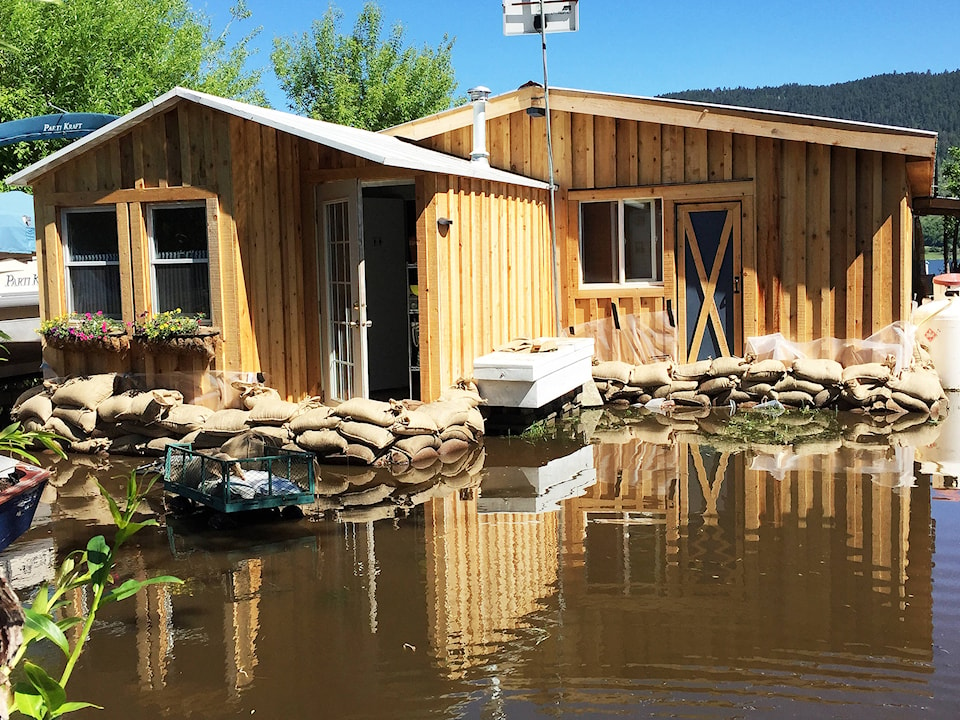The water levels in the Duteau Creek water reservoirs are rising fast with the warmer temperatures and it is predicted that they will spill in the coming weeks.
Reservoir levels have been below normal since last summer and as of May 1, 2018, the water levels were still 2,606 megalitres (22 per cent) below average.
“Persons living or working near creeks and streams should be aware that stream water levels may rise quickly during this time and should exercise caution around the fast-moving water,” advises John Lord, water distribution manager with the Regional District of North Okanagan.
See related: Okanagan braces for next wave of flooding
With the potential for continued flooding in the Interior, the provincial government is also reminding residents to be vigilant with their safety.
Individuals are advised to stay away from floodwaters. If you come upon a fast-flowing stream where water is above your ankles, stop, turn around and go the other way, as just over 15 centimetres (six inches) of swiftly moving water can sweep you off your feet.
Never underestimate the swiftness of the water. High stream flows are unpredictable. Even though the surface water may be smooth, the water could be moving very fast. If you have to walk in water, wherever possible, walk where the water is not moving. Use a stick to check the firmness of the ground in front of you.
Never attempt to drive or walk in flood water. About 61 centimetres (two feet) of rushing water can carry away most vehicles, including SUVs and pickup trucks.
Sandbagging
To minimize flood water damage, sandbagging is one of the most versatile flood-fighting tools and is a simple, effective way to prevent or reduce flood water damage. Homeowners, who are preparing homemade sandbag,s need to be aware of the proper steps to take:
* A minimum of two people should be part of the sandbagging process. It will take about one hour to fill and place 100 sandbags, giving you a 30.5-centimetre-by-six-metre (one-foot-by-20-foot) wall.
* Make sure you have enough sand, burlap or plastic bags, shovels, and time to properly prepare.
* Contact your local government for information on obtaining sandbags.
See related: City supplies pre-filled sandbags
Fill materials
* Sand is, by far, the easiest material for filling and shaping sandbags, and becomes heavier when saturated with rain or moisture.
* In emergencies, other materials, such as silt, clay and gravel, or a mixture of these, may be used. None of these work as well as sand.
Proper filling procedure
* Always wear gloves, and avoid touching your eyes and mouth.
* Filling sandbags is normally a two- to a three-person task.
* One member, while crouching with feet apart and arms extended, places the bottom of the empty bag on the ground.
* The opening of the bag is folded outward about 2.5 centimetres to 3.8 centimetres (one inch to 1.5 inches) to form a collar and held open to allow the second team member to fill with the material — approximately one-half or two-thirds full, and then fold them over.
* Do not hurry. Haste can result in undue spillage and additional work.
* The third team member stockpiles or stacks the open sacks.
Proper placement
* Remove any debris from the areas where bags are to be placed.
* Place the bags lengthwise and parallel to the direction of flow.
* Fill the low spots first, before placing bags the full length of the area to be raised.
* Start at approximately 30.5 centimetres (one foot) landward from the river or levee’s edge.
* Fold the open end of the bag under the filled portion. The folded end of the bag should face upstream.
* Place succeeding bags with the bottom of the bag tightly and partially overlapping the previous bag.
* Offset adjacent rows or layers by one-half bag length to avoid continuous joints.
@VernonNews
newstips@vernonmorningstar.com
Like us on Facebook and follow us on Twitter.
